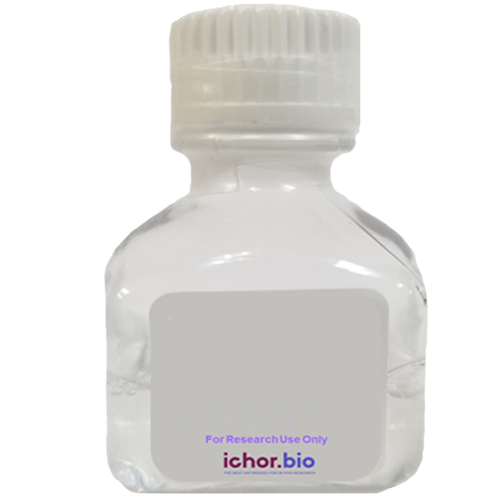Bulk anti-Human CD4 antibody (OKT-4) [ICH1166]
- Sizes: 5mg, 25mg, 50mg, 100mg,
- Category: ichorbio, Low Endotoxin, anti-human
- Target: CD4
- Clone: OKT-4
- Host: Mouse
-
 Datasheet
Datasheet
 Tech Support
Tech Support

PRODUCT DETAILS
SPECIFICATIONS |
|
|---|---|
|
PRODUCT NAME |
Bulk anti-Human CD4 antibody (OKT-4) [ICH1166] |
|
SPECIES REACTIVITY |
Human, Rhesus, Cynomolgus, Chimpanzee, Sooty Mangabey |
|
HOST |
Mouse |
| SPECIFICITY |
Clone OKT4 recognizes Human CD4. This clone recognizes a different epitope than the RPA-T4 monoclonal antibody, and these antibodies do not interfere with each other |
| PURIFICATION METHOD |
This monoclonal antibody was purified using multi-step affinity chromatography methods such as Protein A or G depending on the species and isotype. |
| ANTIGEN DISTRIBUTION |
CD4 is expressed on most thymocytes, a subset of T cells, and monocytes/macrophages, and may be detected in thymus, lymph nodes, tonsils, and spleen, and also in specific regions of the brain, gut, and other non-lymphoid tissues. |
| IMMUNOGEN |
Human peripheral T cells |
| CONCENTRATION |
|
| FORMULATION |
This monoclonal antibody is aseptically packaged and formulated in 0.01 M phosphate buffered saline (PBS) pH 7.2 - 7.4, 150 mM NaCl with no carrier protein, potassium or preservatives added. BSA and azide free |
| PURITY |
>95% by SDS-PAGE and HPLC |
| ENDOTOXIN |
≤ 1.0 EU/mg as determined by the LAL method |
| AGGRIGATION |
Aggregation level ≤ 5% |
| STORAGE CONDITION |
This antibody is stable for at least one week when stored sterile at 2-8°C. For long term storage aseptically aliquot in working volumes without diluting and store at –80°C. Avoid Repeated Freeze Thaw Cycles. |
TARGET |
|
|---|---|
| TARGET |
CD4 |
| CLONE |
OKT-4 |
| SYNONYMS |
|
| BACKGROUND |
Integral membrane glycoprotein that plays an essential role in the immune response and serves multiple functions in responses against both external and internal offenses. In T-cells, functions primarily as a coreceptor for MHC class II molecule:peptide complex. The antigens presented by class II peptides are derived from extracellular proteins while class I peptides are derived from cytosolic proteins. Interacts simultaneously with the T-cell receptor (TCR) and the MHC class II presented by antigen presenting cells (APCs). In turn, recruits the Src kinase LCK to the vicinity of the TCR-CD3 complex. LCK then initiates different intracellular signaling pathways by phosphorylating various substrates ultimately leading to lymphokine production, motility, adhesion and activation of T-helper cells. In other cells such as macrophages or NK cells, plays a role in differentiation/activation, cytokine expression and cell migration in a TCR/LCK-independent pathway. Participates in the development of T-helper cells in the thymus and triggers the differentiation of monocytes into functional mature macrophages. (Microbial infection) Primary receptor for human immunodeficiency virus-1 (HIV-1). Down-regulated by HIV-1 Vpu. Acts as a receptor for Human Herpes virus 7/HHV-7. |
| UNIPROT |
|
| PATHOGEN TEST |
|
| APPLICATIONS |
ELISA, ICC, IF Staining, IHC (Frozen), Immunoprecipitation, Neutralisation, Western Blot |
| APPLICATION NOTES |
Each investigator should determine their own optimal working dilution for specific applications. |
| USAGE |
Products are for research use only. Not for use in diagnostic or therapeutic procedures. |


